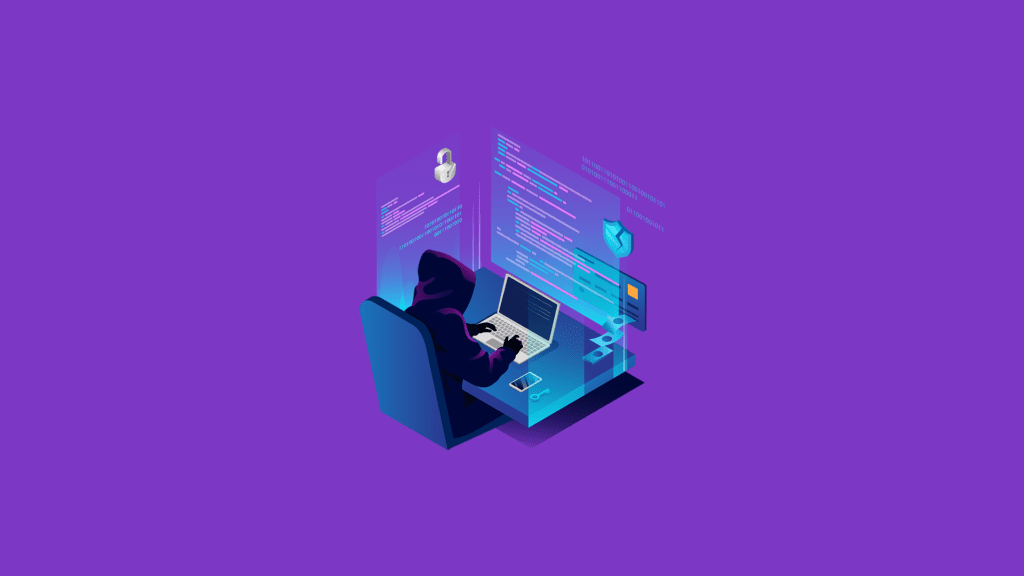Virtually all software development has some security risk, whether it is a result of insufficient testing, ignoring best practices, using open-source code with known vulnerabilities, or any combination of poor techniques. Unfortunately, these flaws persist and show up with increasing frequency in applications and operating systems every day.
The goal of software professionals everywhere is to create reliable, secure software that prevents intrusion by cybercriminals, inefficient use of system resources, inadvertent access to sensitive data, or unexpected results. Every opportunity for exploitation can and will be leveraged by cybercriminals eagerly waiting for the chance. Find out about the most common vulnerabilities and how you can avoid them for more secure applications.
What Is SDLC (Software Development Life Cycle)?
The Software Development Life Cycle is an industry-standard process designed to create reliable, quality software securely and repeatably at the lowest cost. It is a structured plan consisting of a series of phases or stages that have deliverables and acceptance criteria. This plan is designed to consistently adhere to quality and security requirements while meeting customer expectations, minimizing risk, and reducing time to production.
The SDLC phases include:
- Requirement analysis
- Planning
- Software design such as architectural design
- Software development
- Testing
- Deployment
This standardized framework outlines the tasks and deliverables necessary for each phase and facilitates project planning, task estimation, and scheduling. It also provides all stakeholders visibility and traceability. Using a repeatable outline decreases project risk, increases development speed, aids client interaction, facilitates project management and saves on production costs. Most importantly, it allows developers to address security issues long before final testing or production deployment.
What Are the Top 5 Software Vulnerabilities?
Three concurrent characteristics define a vulnerable flaw in software:
- It exists.
- Cybercriminals have access to it.
- It can be exploited.
It isn’t just small companies with limited resources that exist with these risks in production. These are the number of vulnerabilities reported by the top 10 technology companies in 2022:
- Debian Linux – Debian OS: 5,870
- Android – Google OS: 4,073
- Ubuntu Linux – Canonical OS: 3,130
- Mac Os X – Apple OS: 2,965
- Fedora – Fedoraproject OS: 2,805
- Linux Kernel – Linux OS: 2,763
- Windows 10 – Microsoft OS: 2,590
- iPhone Os – Apple OS: 2,573
- Chrome – Google Application: 2,346
- Windows Server – 2016 Microsoft OS: 2,334
As this list indicates, potentially dangerous flaws continue to show up in code everywhere despite coding standards, best practices, and security testing. Patching is a common and frequent practice attempting to remediate the risk of exploitation. However, it can be almost overwhelming for IT managers to know what updates to prioritize. In one survey, 72% of respondents said it was difficult to know which patches were most important.
In short, anything that presents an opportunity for exploitation is critical to fix. Unfortunately, that is a very long list. To help you prioritize, we’ve narrowed down the most dangerous software vulnerabilities with an explanation of each.
1. SQL Injection
Keeping sensitive data out of the hands of hackers is of paramount concern to businesses around the world. SQL injection or SQLi is a constant threat to data security that allows cybercriminals to hijack the queries in an application to access the database. This access can give them the ability to steal, change, or delete sensitive customer or enterprise information. It can also provide them with a way to perform a denial-of-service attack or compromise infrastructure.
Notable examples of SQLi include:
- 7-Eleven experienced an injection attack that resulted in the theft of 130 million customer credit card numbers.
- The APT group targeted 53 universities in the GhostShell attack, where 36,000 personal records of faculty, staff, and students were published.
- RedHack collective, also part of the APT group, hacked the Turkish government to eliminate all debt to government agencies.
- The infamous hacker group Anonymous took down the HBGary site after its CEO threatened to publish the names of Anonymous members.
The impact of an SQLi attack can be devastating and may not be noticed for some time, giving bad actors a back door into your organization. A SQL injection can take down websites, cause irreparable harm to brand reputations, and result in substantial regulatory fines. Thwarting the risk of SQLi intrusion is a matter of using parameterized queries. To be effective, query strings should always be hard-coded, and no variable data should be used.
2. OS Command Injection
Another dangerous web security flaw is called shell injection or OS command injection. This code allows cybercriminals to execute commands directly on the application server. HTML may be entered through cookies, or a form field lets the attacker change the web page dynamically. It may also allow them to leverage trust relationships to attack other parts of the organization’s infrastructure.
OS command injection can be prevented by using safer APIs. Calling out to OS commands through application-layer code with user-controllable data opens up the possibility of manipulating server-level commands. All user-entered data should have a limited length and be validated through a whitelist of acceptable input values. Ensure that APIs only execute very specific processes by name with command line parameters to limit an attacker’s options in the event of a breach.
3. Buffer Overflow
Buffers hold only a finite amount of data. That means that any extra data in a fixed block of memory overflows into addresses adjacent to the destination buffer. The result is that data is overwritten. When hackers exploit this type of vulnerability, they can modify internal application variables or crash a process.
However, it’s not only cybercriminal action that can cause overflow to occur. It can happen inadvertently when data is not properly validated. Using adequate bounds checking can eliminate extra data sent to a memory buffer or flag the data to bring attention to it.
4. Uncontrolled Format String
When an input string is evaluated as an application command, it can change its intended behavior. This type of manipulation is called a format string attack. This type of vulnerability is related to buffer and integer overflows in that they change the interpretation or behavior of an application to allow it to access other memory spaces.
When hackers exploit an uncontrolled format string using string library formatting characters, they can execute code that threatens system stability and security. Compromise may include reading the stack or introducing a segmentation fault. Best practices to prevent this type of risk include disallowing user-controlled inputs to format functions and validating input.
5. Integer Overflow
Also called wraparound, integer overflow is when arithmetic operations allow integer values to exceed allocated storage, allowing it to overflow limited memory space. It is common for compilers to ignore any resulting errors or abort the program entirely when integer overflows occur. However, that behavior can open the application up to attackers who will exploit the buffer overflow to execute malicious code. They may also escalate privileges to give them even more power to do damage.
Unfortunately, integer overflow is hard to detect and debug due to the variability of undefined behaviors. To avoid integer overflow attacks, best practices include user input data validation and limiting the min and max values per integer type. The software should also handle all out-of-bound value exceptions.
How To Avoid the Vulnerabilities in Software Development
The constant rise in data breaches, ransomware attacks, and other malicious cyberattacks every year means organizations must remain vigilant against attacks. Developers should always be prioritizing secure coding practices, executing a wide variety of application testing, and implementing robust security tools and frameworks. While there is no way to eliminate all cybersecurity risks, secure software development life cycle practices can make it more difficult for attackers to exploit any vulnerabilities.
Define Security Requirements for Software Development
Requirements are the minimum necessary actions that something can do to be acceptable. In other words, an e-commerce site would, at a minimum, need to display items for sale, allow the customer to add them to a cart, and give them a method to input a payment method and delivery details before checking out. Security requirements for software protection ensure that the expected behaviors occur and that unintended use is curtailed. They encompass functional, non-functional, and derived requirements.
Implement Roles and Responsibilities
Roles and responsibilities are intended to define the various personas and limit the ability of administrators and users to only the actions necessary for them to perform the expected functions of their position. Someone has to be responsible for managing the application, performing code scans, and applying essential security patches, equating to enhanced permissions that a typical user should not have. This security measure prevents inadvertent damage to the system, loss of data, and intentional malicious actions.
Implement a Supporting Toolchain
Automation mitigates the risk of human error and standardizes security procedures throughout the software development process. Minimizing risk also means identifying which development tools are included in each toolchain and which security tools will be integrated. The tools themselves should be monitored for potential security vulnerabilities by tracking logs. Additional protocols should include an audit trail of security actions, the audit scope and schedule, and how the audit will be performed.
Define Criteria for Software Security Checks
Just as an application has functional requirements and acceptance criteria, security criteria ensure that the software complies with security requirements. They support stated risk tolerance and define acceptable results from security testing. These criteria come from a combination of past vulnerabilities, regulations, and industry standards. Software security criteria should address application software and internal system interfaces and various user privileges to prevent escalation and exploitation.
Ensure the Software Release Integrity
There are several steps you can take to protect the integrity of the software release, including:
- Ensure all code is stored in a secure code repository
- Implement code signing on executables
- Leverage cryptographic hashes for file integrity
- Limit access to code repositories
- Provide verification information to software consumers
- Store a software bill of materials for everything in the software repository
- Use version control and audit all changes, including the source or developer that implemented the change
Archive and Protect Each Software Release
When a consumer acquires new software, they need to have the assurance that it is safe to install and from a legitimate source. To safeguard the software, cryptographic hashes should be posted on a tightly secured website for release files. Code certificates, renewal dates, and signing processes should also be reviewed regularly. Use only reputable and established signing authorities.
Finally, every release should be copied and archived. Everything from the application code to package files, third-party libraries, release notes, and integrity verification data should be included in the archive. The release file repository should be secured with restricted access.
Scan the Software for Vulnerabilities Regularly
Common industry practice is to perform quarterly vulnerability scans to identify security flaws in your software. However, cybercriminals work 24x7x365. Each business must assess its own risk tolerance level to decide how often it should perform scans. Many companies adopt a routine monthly or weekly scanning schedule to uncover vulnerabilities sooner.
Simplify Software Development Management
Ensuring the security of your software and your systems is a never-ending task. Preventing, detecting, and remediating software vulnerabilities starts with developers but involves virtually every part of your IT organization for adequate coverage. It also takes frequent assessment to ensure that no new threats have been introduced along the pipeline. That means implementing the proper scanning and testing tools to stay on top of emerging risks. SOOS tracks over 100,000 known vulnerabilities with each scan. We understand that security isn’t an option; it’s a necessity. Our protection has no scan limits, and every feature is available in unlimited projects for unlimited users. It can also be integrated easily into your CI/CD pipeline. To learn more about our software composition analysis service for software vulnerability scanning, visit our blog.













